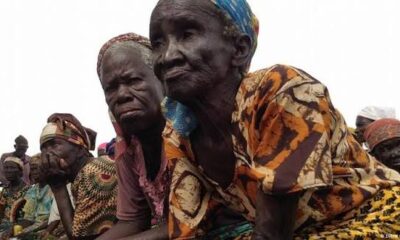Health
Signs And Symptoms Of Cholecystitis And How To Prevent It

Cholecystitis is a condition characterized by inflammation of the gallbladder, a small organ located beneath the liver. The gallbladder plays a crucial role in the digestive process by storing and concentrating bile, a fluid produced by the liver that aids in the digestion of fats. When the bile ducts leading to the gallbladder become blocked, typically by gallstones, bile accumulates in the gallbladder, leading to irritation, inflammation, and potentially infection. This inflammation can cause a range of symptoms, from mild discomfort to severe pain and complications.
The onset of cholecystitis is often associated with the presence of gallstones, which are small, hardened deposits formed from substances found in bile, such as cholesterol and bilirubin. Gallstones can vary in size and number, and they may remain asymptomatic for years. However, when a gallstone obstructs the cystic duct, the tube that carries bile from the gallbladder to the common bile duct, it can lead to a buildup of bile within the gallbladder. This buildup increases pressure within the gallbladder, impairs blood flow, and triggers inflammation of the gallbladder wall, resulting in cholecystitis.
There are two main types of cholecystitis: acute and chronic. Acute cholecystitis refers to a sudden onset of inflammation, often accompanied by severe pain in the upper abdomen, nausea, vomiting, and fever. These symptoms typically develop over a few hours and can be triggered by the obstruction of the cystic duct by a gallstone. In some cases, acute cholecystitis can lead to complications such as gallbladder perforation, abscess formation, or even sepsis if left untreated. Chronic cholecystitis, on the other hand, is characterized by recurrent episodes of inflammation and may develop over time as a result of repeated episodes of acute cholecystitis or persistent gallstone presence. Chronic cholecystitis may manifest with milder symptoms that come and go, such as intermittent abdominal pain, bloating, and indigestion.
The diagnosis of cholecystitis often begins with a thorough medical history and physical examination, during which a healthcare provider may inquire about the patient’s symptoms, medical history, and risk factors for gallbladder disease. Laboratory tests, such as blood tests to assess liver function and evaluate for signs of inflammation, may also be ordered. Imaging studies, such as ultrasound or computed tomography (CT) scans, are commonly used to visualize the gallbladder and detect signs of inflammation, gallstones, or complications such as abscesses or perforation. In some cases, additional diagnostic procedures, such as cholescintigraphy (HIDA scan) or magnetic resonance cholangiopancreatography (MRCP), may be performed to further evaluate the biliary system and assess gallbladder function.
Treatment for cholecystitis depends on the severity of symptoms, the presence of complications, and the patient’s overall health status. In cases of acute cholecystitis, hospitalization may be necessary to provide intravenous fluids, pain management, and antibiotics to control infection. In some instances, a procedure called percutaneous cholecystostomy may be performed to drain the gallbladder and relieve pressure in cases of severe inflammation or if surgery is not immediately feasible. However, the definitive treatment for cholecystitis is often surgical removal of the gallbladder, a procedure known as cholecystectomy. This can be performed using either traditional open surgery or minimally invasive techniques such as laparoscopic cholecystectomy, which involves making small incisions in the abdomen and using specialized instruments to remove the gallbladder. In cases of chronic cholecystitis without acute symptoms or complications, cholecystectomy may be recommended to prevent future episodes and potential complications.
Complications of cholecystitis can range from mild to life-threatening and may include gallbladder perforation, which can lead to peritonitis or abscess formation, and bile duct obstruction, which can result in jaundice or pancreatitis. In severe cases, untreated cholecystitis can progress to systemic infection (sepsis), which can be fatal if not promptly treated. Therefore, early recognition and intervention are essential to prevent complications and improve outcomes in patients with cholecystitis.
Several risk factors are associated with an increased likelihood of developing cholecystitis, including age (particularly over 40), female gender, obesity, rapid weight loss, a high-fat diet, certain medical conditions such as diabetes or liver disease, and a family history of gallbladder disease. Additionally, certain lifestyle factors, such as smoking and sedentary behavior, may also contribute to the development of gallstones and increase the risk of cholecystitis.
Prevention strategies for cholecystitis primarily focus on reducing the risk of gallstone formation, as gallstones are the primary cause of the condition. Maintaining a healthy weight through diet and exercise, avoiding rapid weight loss or crash diets, and consuming a balanced diet low in fat and cholesterol can help minimize the risk of gallstone formation. For individuals at high risk of gallbladder disease, such as those with a family history or certain medical conditions, regular medical check-ups and discussions with healthcare providers about preventive measures and risk factors are essential.
In conclusion, cholecystitis is a common and potentially serious condition characterized by inflammation of the gallbladder, often resulting from the obstruction of the cystic duct by gallstones. Acute cholecystitis presents with sudden-onset symptoms such as severe abdominal pain, nausea, and fever, while chronic cholecystitis may manifest with recurrent episodes of milder symptoms over time. Diagnosis typically involves a combination of medical history, physical examination, laboratory tests, and imaging studies, with treatment ranging from conservative measures such as antibiotics and pain management to surgical removal of the gallbladder. Complications of cholecystitis can be severe and may include gallbladder perforation, bile duct obstruction, or systemic infection, underscoring the importance of early recognition and intervention. Prevention strategies focus on reducing the risk of gallstone formation through lifestyle modifications and regular medical monitoring for individuals at high risk of gallbladder disease. By understanding the causes, symptoms, diagnosis, and treatment options for cholecystitis, healthcare providers can effectively manage this condition and improve outcomes for affected individuals.




























